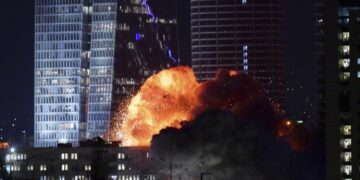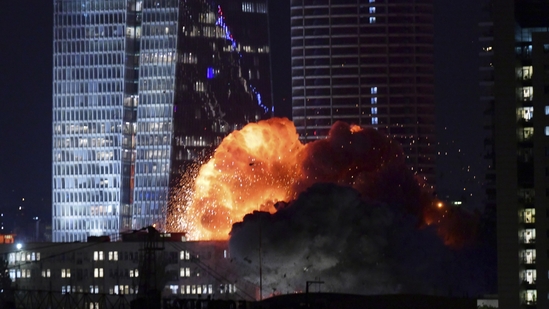In a daring and comprehensive assault, Israel launched a series of precision strikes across Iran targeting the core of Tehran’s nuclear program. The attacks, which reportedly killed high-ranking military officials and nuclear scientists, also inflicted significant structural and technological damage on key nuclear enrichment facilities. Analysts suggest these strikes could delay Iran’s nuclear ambitions by months—possibly even years.
Among the most critical targets hit was the Natanz enrichment plant, located 220 kilometers southeast of Tehran. This facility, a cornerstone of Iran’s uranium processing efforts, was severely damaged. The International Atomic Energy Agency (IAEA) confirmed that the above-ground portion of the plant—responsible for enriching uranium to 60%—was completely destroyed. Electrical infrastructure, including substations, emergency backup generators, and main power systems, were also taken out. Although no increase in radiation levels was reported, the power loss could have permanently damaged the delicate centrifuges used to enrich uranium.
“There is no question the attacks caused massive damage,” said Fabian Hinz of the International Institute of Strategic Studies. He and nuclear weapons expert David Albright estimate the setback to Iran’s nuclear weapons development could be around one year. The scale of destruction and the surgical nature of the strikes suggest an advanced level of Israeli intelligence penetration into Iranian facilities.
The Natanz plant’s underground section, housing around 10,000 centrifuges enriching uranium up to 5%, was shielded from direct strikes due to its depth. However, experts believe the shockwaves from explosions and sudden power loss might have compromised the fragile centrifuge systems.
Another focal point was the Fordo nuclear site, located deep beneath a mountain southwest of Tehran. Iran uses this facility to enrich uranium up to 60%—a short technical leap away from the 90% threshold required for weapons-grade material. While Israel reportedly struck near the facility, experts such as Hinz believe Israel lacks the earth-penetrating bombs needed to destroy Fordo. However, indirect sabotage, such as disabling power or access points, remains within Israel’s capabilities.
The Israeli strategy seems aimed not only at physical destruction but also at eroding the intellectual and logistical backbone of Iran’s nuclear program. By targeting scientists and component suppliers, Israel may be attempting to cripple Iran’s long-term capacity to rebuild.
Iran’s nuclear program has advanced rapidly since the U.S. withdrew from the 2015 nuclear deal. Tehran insists its activities are peaceful, but the IAEA has repeatedly warned that Iran possesses enough enriched uranium for multiple nuclear weapons. The timing of Israel’s assault signals a clear warning and a possible new phase of kinetic deterrence.
Despite the scale of destruction, experts downplayed the likelihood of radiation exposure. According to Albright, uranium is not highly toxic in its raw form, and any radiation released in such attacks is minimal. However, a real concern arises from fluorine used in uranium enrichment. If released, this highly reactive gas can cause severe injuries and even death if inhaled or touched.
Israeli Prime Minister Benjamin Netanyahu, emphasising the existential nature of the Iranian threat, vowed that the attacks would continue “for as many days as it takes to remove this threat.” His statement underscores Israel’s resolve to prevent Iran from acquiring nuclear weapons capability—even at the risk of broadening the conflict.
In summary, Israel’s calculated offensive has significantly impacted Iran’s nuclear progress by destroying infrastructure, crippling technical operations, and targeting the intellectual forces behind the program. While Tehran may eventually recover, the recent strikes mark a serious and possibly long-term disruption in its nuclear trajectory.








 India
India












